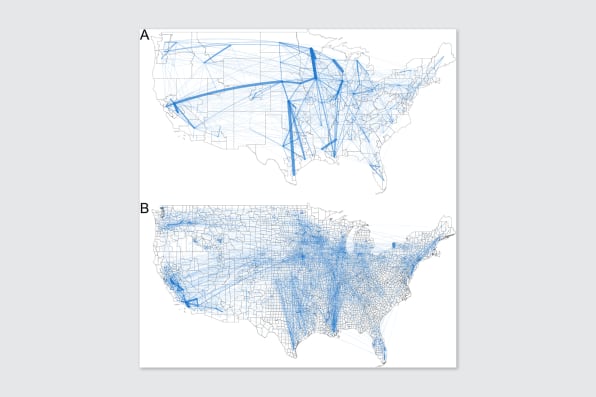"Now that the impeachment proceedings have reached a pause, it is time to take a deep breath and consider the big picture.
The evidence presented so far is overwhelming. President Trump allegedly used $391 million of military aid and a dangled White House visit to extort the Ukrainian government into opening a bogus investigation for Trump’s own personal and political gain. Those allegations have been corroborated by multiple sources — none of whom qualify as partisan shills. The evidence comes from a summary of a phone call released by the White House itself; from a series of high-level advisers and ambassadors that Trump appointed himself; and even from a guy who liked Trump so much that he gave his inauguration fund $1 million. (Trump drained the swamp by returning the million-dollar favor with a coveted ambassadorship).
But does evidence even matter anymore? If it doesn’t, what does that say about the state of our democracy?
In a mid-November Marist/NPR survey, 65 percent of respondents answered “no” to the question: “Can you imagine any information or circumstances during the impeachment inquiry where you might change your mind about your position on impeachment?” 73 percent of Republicans and 68 percent of Democrats said there was literally nothing they could imagine that would cause them to change their point of view. Seriously?
This is particularly telling for Republicans who oppose impeachment. After all, some Democrats may argue that the burden of proof has already been reached to support impeachment. But for Republicans who oppose it — who believe that burden of proof has not yet been reached — they are saying that there is nothing imaginable that could cause them to ever support impeachment. That’s akin to acknowledging that Trump was right when he claimed he could shoot someone on Fifth Avenue and not lose of any of his supporters. With hardening attitudes, compromise and consensus become impossible — and democracy withers.
Democracies require a shared sense of reality. To solve problems, you have to agree they exist. And to impeach presidents, Americans of all partisan stripes need to know when damning facts are staring them in the face. That’s no longer the case.
Instead, Americans inhabit two separate realities — or, more accurately, one group inhabits a fantasy world that exists parallel to reality. Last week, Trump’s handpicked ambassador to the European Union testified that there was a nefarious quid pro quo with Ukraine, and that “we followed the president’s orders.” The ambassador implicated the president in an egregious abuse of power. In response, Fox News hosts and Trump’s Twitter feed erupted into celebration, boasting that the damning testimony had somehow exonerated Trump. (It had not).
The Marist/NPR poll exposed this dynamic: Eighty-seven percent of respondents who support impeachment said the hearings made them more likely to support impeachment, while 85 percent who oppose impeachment said the hearings made them less likely to support impeachment. Crimes, it seems, are now in the eye of the beholder. Not a good sign for a democracy that is built upon the rule of law.
But beyond such dire polarization, there’s another sobering threat to our democracy: apathy. This is not new. In 2016, roughly 3 in 10 American adults voted for Hillary Clinton. Roughly 3 in 10 adults voted for Trump. That means 4 in 10 Americans did not vote. Apathy beat both candidates.
Opinion | Impeachment: Why so much is at stake
The impeachment inquiry into President Trump has exposed troubling cracks in the political system. (Video: Joy Sharon Yi, Kate Woodsome/Photo: Danielle Kunitz/The Washington Post)
During impeachment proceedings, there has been a particularly insidious form of apathy showcased by Sen. Lindsey O. Graham (R-S.C.), who said he refuses to read any evidence related to impeachment. “I’ve written the whole process off. . . . I think this is a bunch of B.S.,” he said. Graham will likely soon be a juror in a Senate trial. Imagine if a juror in a normal trial refused to even look at the evidence. He would be held in contempt of court. Instead, Graham will probably just be reelected in 2020.
But Graham’s apathy is contagious. The more that elected leaders signal they aren’t paying attention to an historic impeachment process, the more that voters think it’s acceptable to tune out, too. Thirty-seven percent of adults nationally have said that they are not paying much attention to impeachment hearings. Republicans are more likely to be ignoring the proceedings than Democrats.
This isn’t how it’s supposed to work. The Founding Fathers envisioned impeachment as a remedy to presidential misconduct. They anticipated a figure such as Trump, a demagogue who used the awesome powers he held to advance himself rather than the United States. They planned for a corrupt president, but they didn’t have a backup plan if his rise coincided with a complicit Congress.
Impeachment, therefore, is about more than Trump, a far-from-perfect phone call, and a shadow foreign policy laced with extortion and bribery. It’s about the essence of our democracy, which can work only if certain conditions are fulfilled. Decisions must be based on evidence rather than partisanship. Presidents must be held accountable when they break the law, not only when the rival party has a two-thirds majority in the Senate. And individual members of Congress should follow their moral compass rather than the one that points to reelection."


